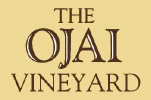

Notes from the Vineyard
Handmade wines since 1983.


SPRING 1999
The most amazing thing about the harvest of 1998 is that it did not turn out to be the disaster that almost all wine makers in our area expected. I vividly remember the last big el nino cycle in 1982-83. 1982 was a good harvest although there was some late rain. The problems began that winter. It started raining, and it didn't stop until well after the 1983 harvest was over. It rained in August, September and October. It was awful, and the grapes were too. We did the best we could, but with todays improved vineyard practices we could do a lot better. Nonetheless, it is almost impossible to make fine wines when one encounters weather conditions like that.
I was certain 1997-98 would be a repeat of that previous el nino cycle. We lucked out with a trouble free harvest in 1997, but surely we would have hell to pay in 1998. I was getting very nervous by mid-September, and then we had some rain that caused major problems in some low-lying chardonnay vineyards. Luckily ours were spared. Because of late spring rains and cool weather, the harvest did not really begin until the third week in September, and by the end of the month, we had harvested only 15% of our crop. In the last days of the month, we brought in the pinot noir. Bien Nacido came in looking good, with only a little bunch rot to sort through. Pisoni was absolutely stellar. I was happy to have some good red wine in the cellar, but was certain October would bring huge rain storms. The weather stayed stubbornly cool, but because of the small crop on the vines, the fruit ripened slowly anyway. The pace of the harvest picked up, and by the end of October everything was in and looking great - except the Bien Nacido Syrah. And until the 19th of November, I wondered each day whether the weather would cooperate. Several times during this period I had horrible doubts about my sanity. I kept thinking I was crazy not to pick the grapes at lower sugar levels while they were still heathly. Why was I risking the loss of the whole crop to rain and then rot? But we lucked out again (it never really rained again until late January!) and the syrah finally ripened fully. Whew!!
In 1997 and 1998 we saw the influence of yield strongly affecting the quality of wine. 1997 was an abundant harvest, and, with one notable exception, our growers thinned the crop to reasonable levels. This allowed us to make big, flavory wines, as vines with too much fruit on them produce wines with dilute character. 1998 had a naturally small crop, and the wines are intensely flavored. The most extreme example of the qualitative effect of low yields occurred with the viognier at Roll Ranch. Because of poor weather during flowering, it set only 3/4 ton to the acre (that's only 3 barrels from two acres!). And as much as I do not want to believe that incrementally lower yields give one ever more intense wines - the economics of a yield this low is troubling - surely this viognier proves the point. This wine is simply stunning.
These last few harvests have convinced me that low yields are one of the essential keys to making wines of the highest quality. And while I find thinning back a bountiful, healthy crop of grapes contrary to my basic instincts (the farmer in me), in the long run the results of doing so are far more satisfying.